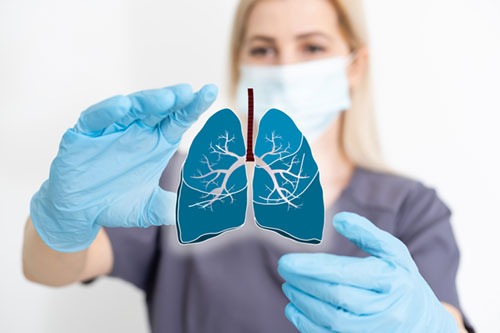
Chronic lung disease causes and burden in India
The most common chronic respiratory diseases in India are Asthma, Chronic obstructive pulmonary disease (COPD), post-tuberculosis (TB) lung disease and bronchiectasis. In India, chronic lung diseases (CLDs) are the second most common cause of death annually and also one of the major causes of disability. There are about an estimated seven crore patients with chronic obstructive pulmonary diseases (COPD) and interstitial lung diseases (ILDs) in our 140-crore population (≈5%). Each year, 10 lakh preventable deaths occur in this group of seven crore patients apart from disabling symptoms and healthcare costs in several crores of rupees. Asthma affects 8-10% of our population and poor control is the norm, fuelled by infrequent monitoring and medication use. Poor control leads to remodelled asthma, low lung function and persistent airflow obstruction and symptoms. Smoking, outdoor & indoor air pollution and chronic infections are the other leading causes of CLDs in India and are mostly influenced by social beliefs rather than directly affected by genetics. Smoking continues to be a major preventable health hazard; 10-15% of our population are current smokers and another 21.4% use smokeless tobacco. Overall, 42.4% of men and 14.2% of women are exposed to tobacco.
Outdoor air pollution is another major respiratory hazard. The Gangetic plains of North India have high levels of air pollution, especially in winter, as compared to anywhere else in the country and the world. Twenty-one out of the top thirty cities with the worst air quality in the world are in India and all of them are in the Gangetic belt. It is estimated that air pollution causes an excess of 20,00,000 (twenty lakh) deaths in our country alone each year. Apart from outdoor air pollution related to industries, vehicular exhaust, construction and stubble burning, indoor air Pollution is also very important and is related to wood stoves, kerosene stoves and other biomass fuels for heating in poorly ventilated rooms. This disproportionately affects lower socio-economic groups. It causes poor peak lung health and recurrent childhood respiratory infections in children and leads to the development of COPD and pulmonary infections in adults. It is associated with an excess of respiratory and cardiovascular deaths in the community. TB and childhood necrotizing respiratory illnesses continue to be rampant in our country. 25% of the global TB burden is contributed by India. There continue to be an estimated 96 lakh active TB cases and 3.3-5 lakh deaths annually in India alone. Despite the cure of active TB, ≈20% have persistent airflow limitation (post-TB obstructive lung disease). It becomes clear that we are in the midst of a silent pandemic of Respiratory non-communicable diseases in our country.
Need and quantum of need for lung transplantation services in India
There is no population or registry-based data on chronic respiratory failure patients (CRF) from India. Assuming a 10% annual mortality for CRF (a very low estimate), we have a prevalence of at least 1 crore (10 lakh deaths annually). Assuming that at least 1% of one crore patients with CRF have willingness, economic, and social support for lung transplantation and none of the contraindications, we have an estimated 1 lakh patients needing lung transplantation in India alone.
Factors hindering the expansion of lung transplantation services in India
There are several factors hindering the wide-spread availability of LTx in India. These are
- Late referral: Due to poor perception and low accessibility of LT, patients present late for LT. Disease severity is a marker for wait-list mortality and reduces 30-day and 1-year survival after LTx due to frailty. It also leads to longer hospital stays and higher healthcare costs as recipients have to stay longer in hospital to recover beyond the duration of their transplant package.
- Public perception: Googling about lung transplantation leads to a list of erroneous and often negative articles about the complications, complexity and costs of LTx.
- Costs: Financial constraints continue to be the single biggest barrier to LTx.
The Kauvery Heart & Lung Transplant program
The Kauvery Heart & Lung transplant program was started in October 2021 and is headed by Prof Kumud Dhital. The program has already made a mark for its excellent outcomes and patient-oriented holistic care in the country. A transplant journey involves a close partnership between patients and their families and our multidisciplinary team at every step of the way. Apart from our surgical and medical specialists, our highly-trained dedicated transplant nurses, rehabilitation team, nutritionists, coordinators and allied support staff play a vital role in the success of any transplant. Our team, helped by the state-of-the-art infrastructure and supportive administrative team, provides comprehensive and life-long support to our transplant patients, answering their queries every day, nudging them to do their follow-up tests and fostering long-term survival.

Dr Srinivas Rajagopala M.D (Int. Medicine), D.M (Pul. & Crit Care)
Fellowship in lung transplantation, Toronto
Senior Consultant, Director, Pulmonology & Sleep Medicine
Director, Transplant Pulmonology & Lung Failure Unit
Kauvery Hospital, Alwarpet & Vadapalani, Chennai

